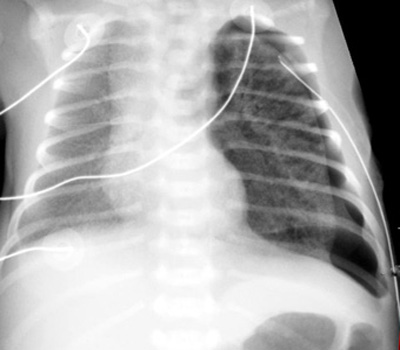Pediatric Radiology > Chest > Respiratory Neonatal Distress > Complications of Respiratory Distress - PIE
Complications of Respiratory Distress
![]()
|
The neonatologist must maintain a balance between the ventilatory needs of the infant and the complications that can result from positive pressure ventilation. The lung volumes on the daily neonatal CXR are used as a guide to determine the ventilator settings. If the compliance of the lungs is too low, or the mean airway pressure is too high, barotrauma will result. The signs of barotrauma should be identified on the neonatal CXR. Pneumothorax has already been discussed.
|
 |
 |
Example of unilateral PIE with a pneumothorax |
Close up of left lung demonstrating the streaky lucencies of the air in the interstitium (red arrows) complicated by a pneumothorax (yellow arrow). This patient was treated with a chest tube and by placing the left side down. The PIE resolved after 2 days. |